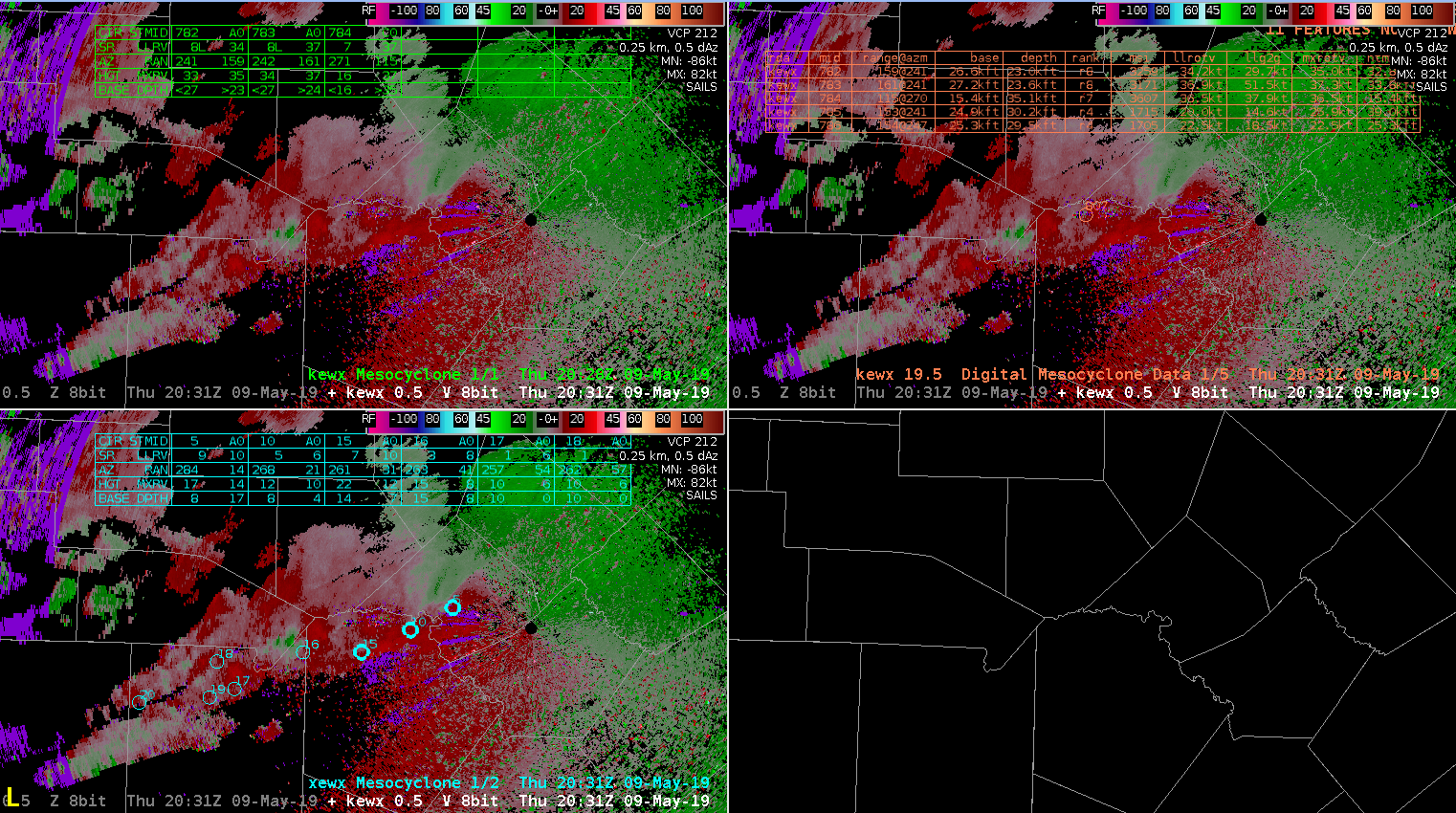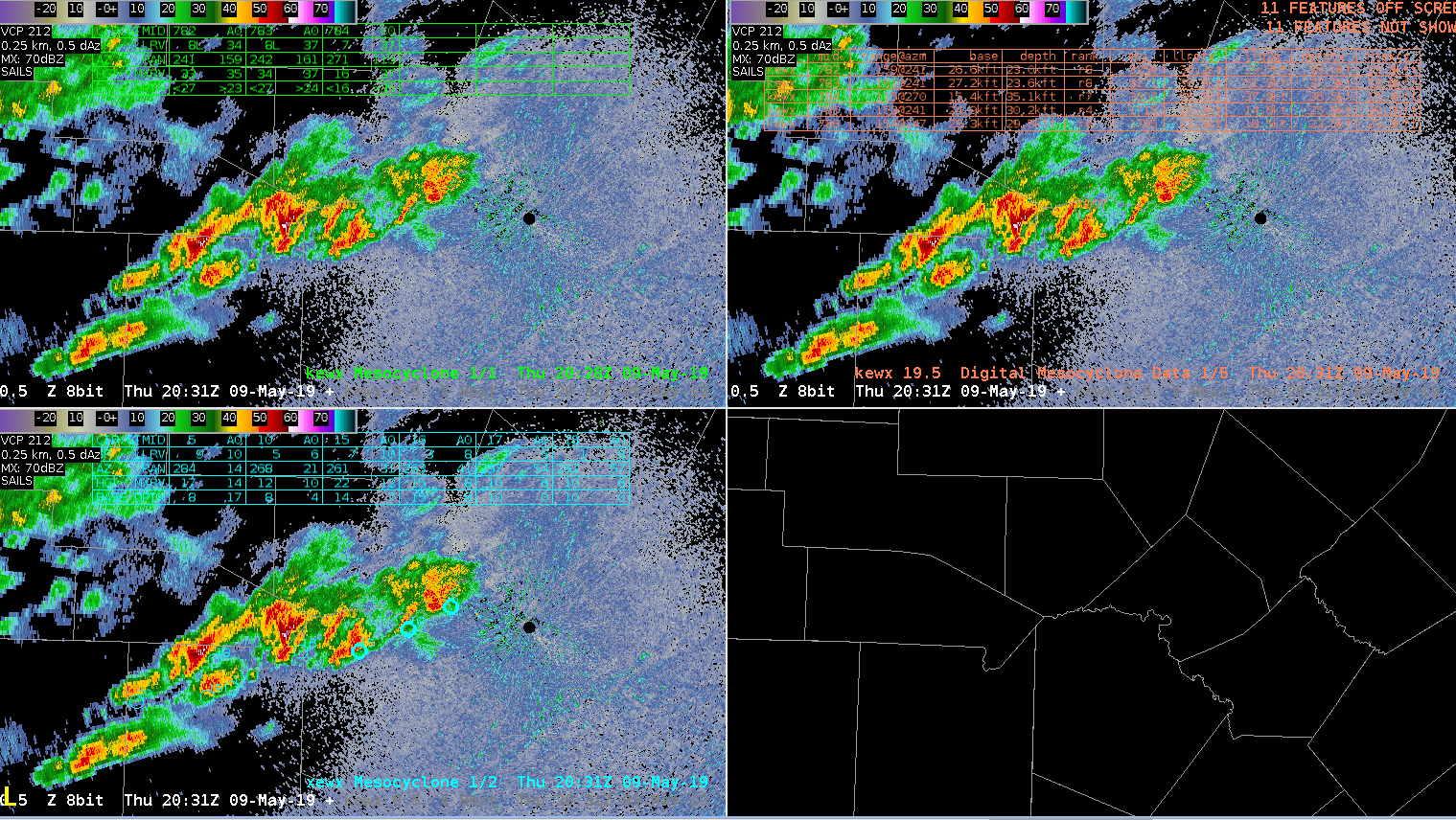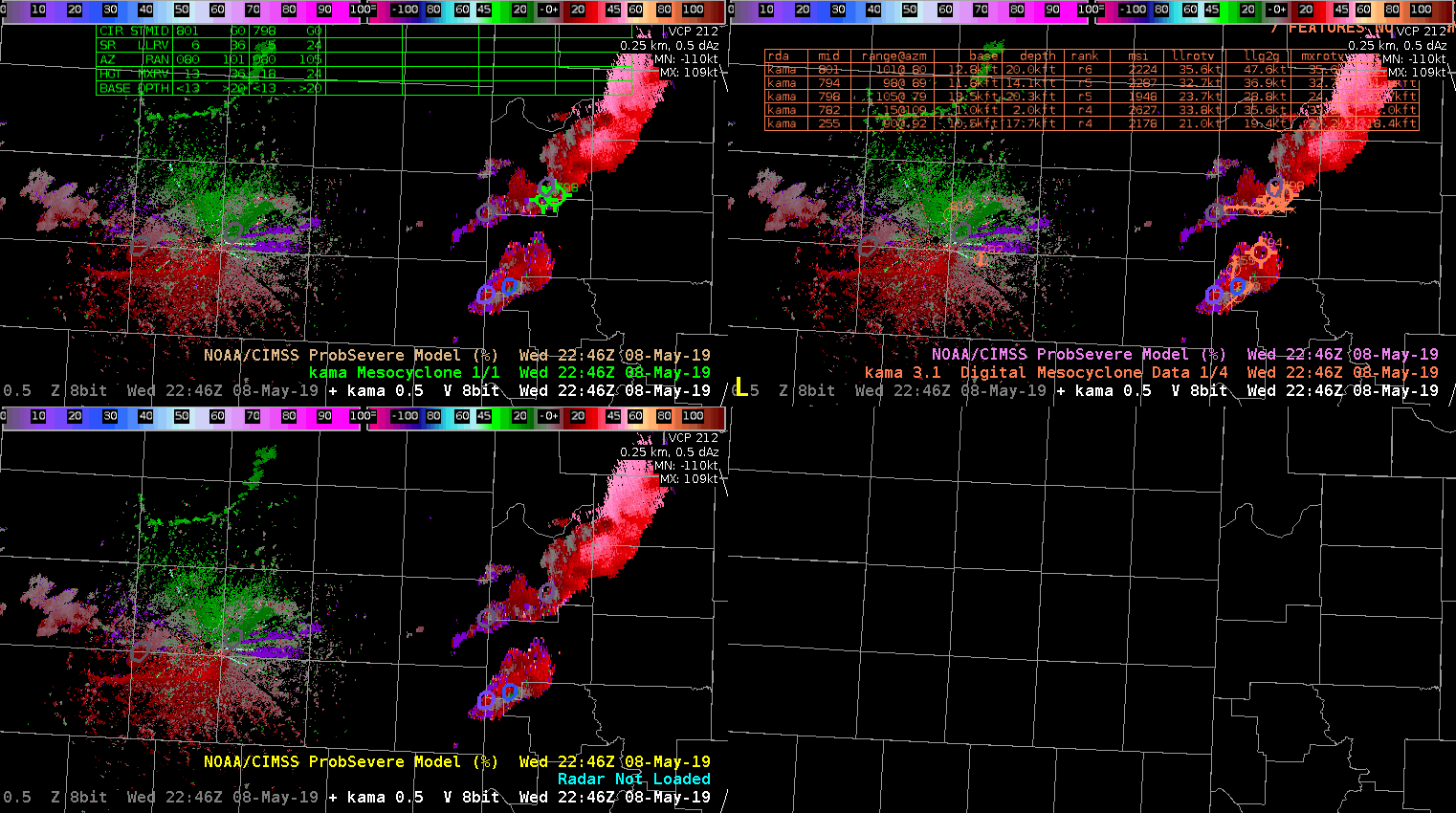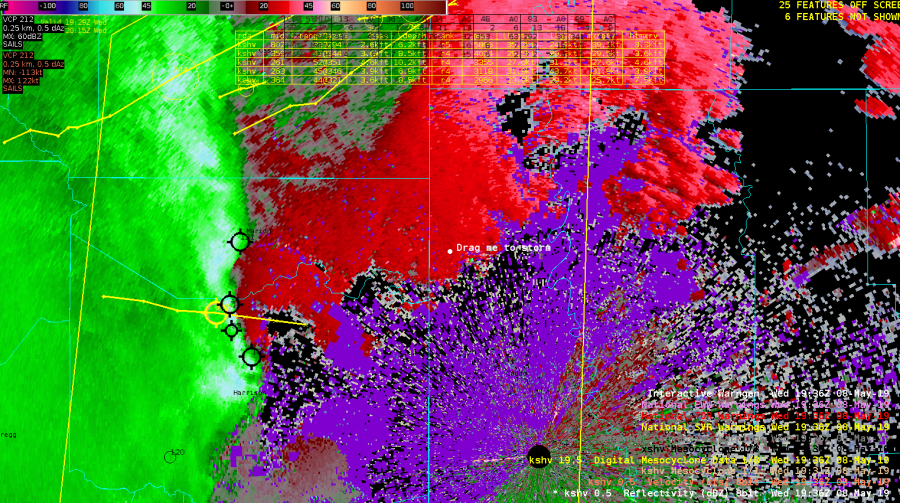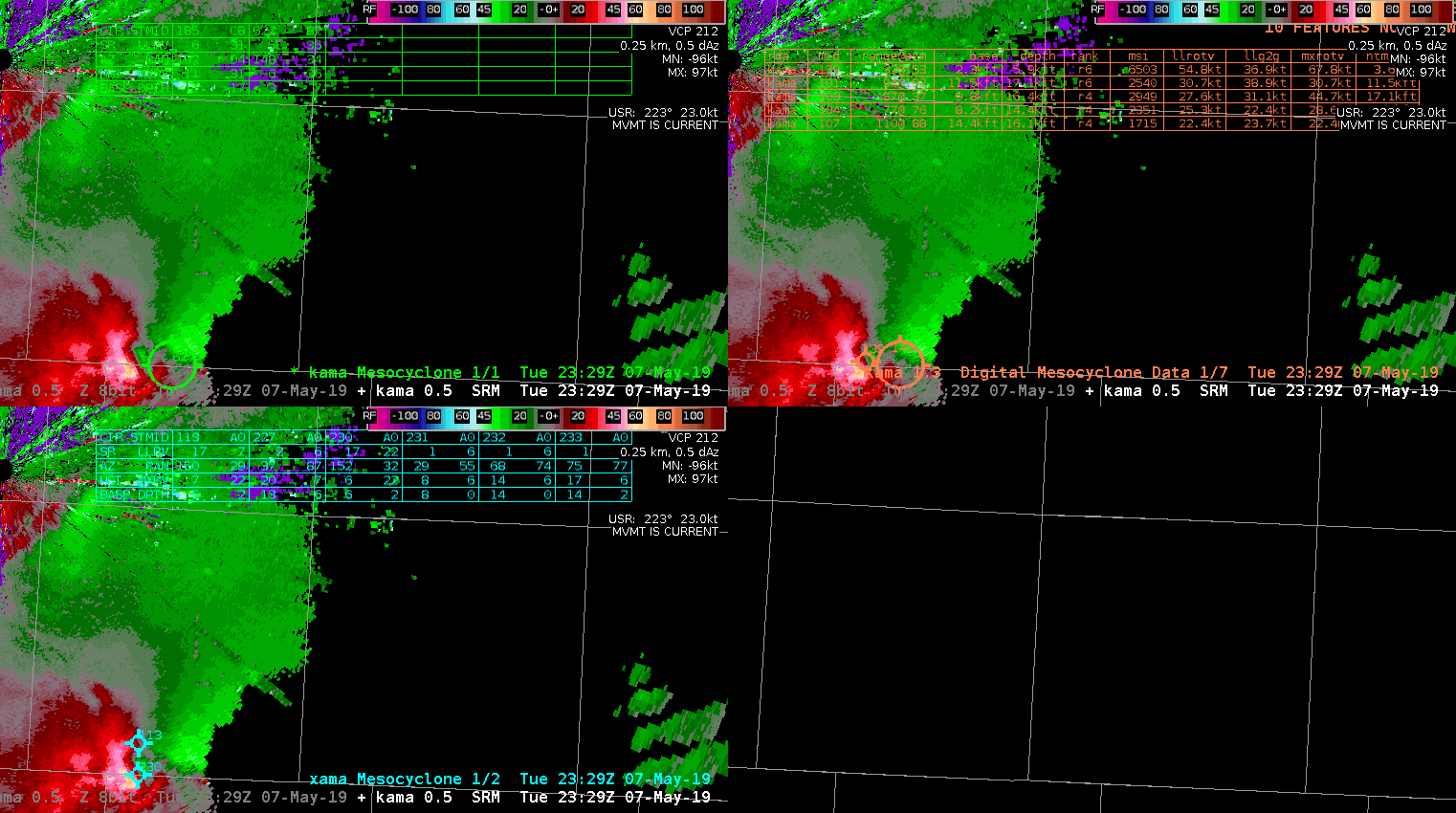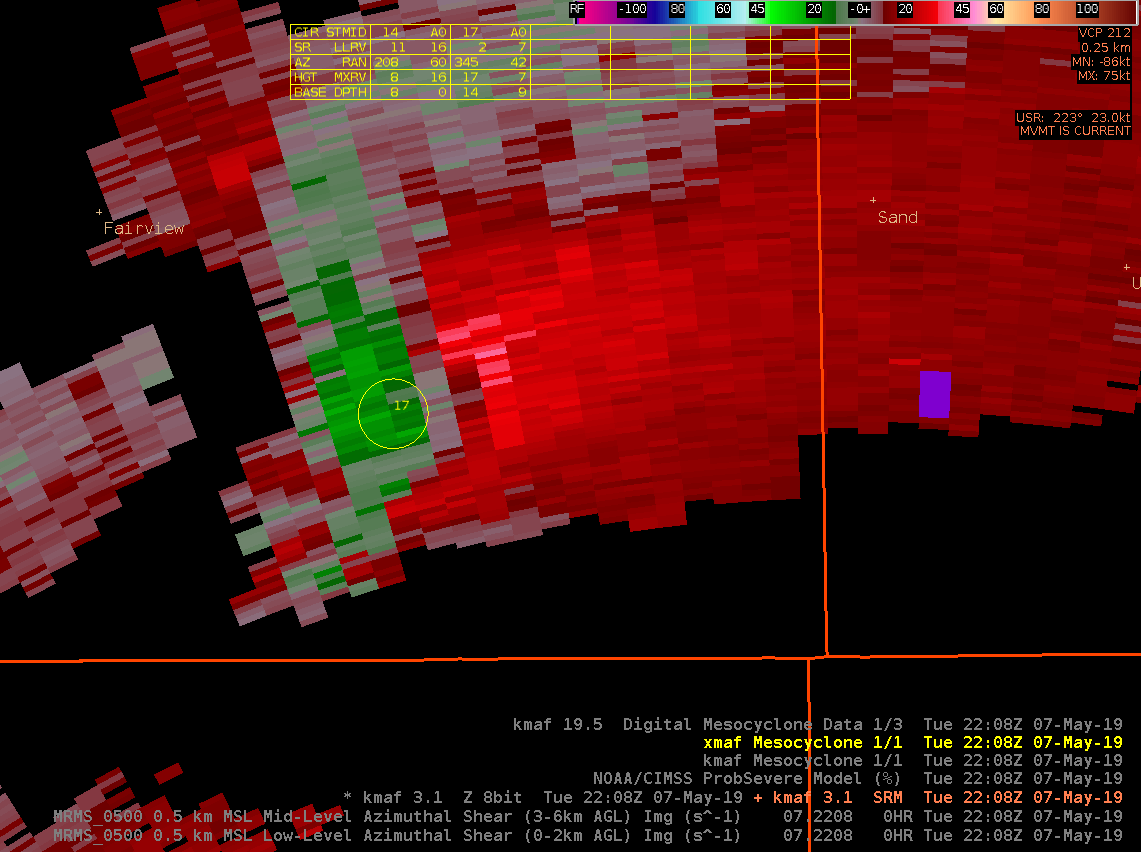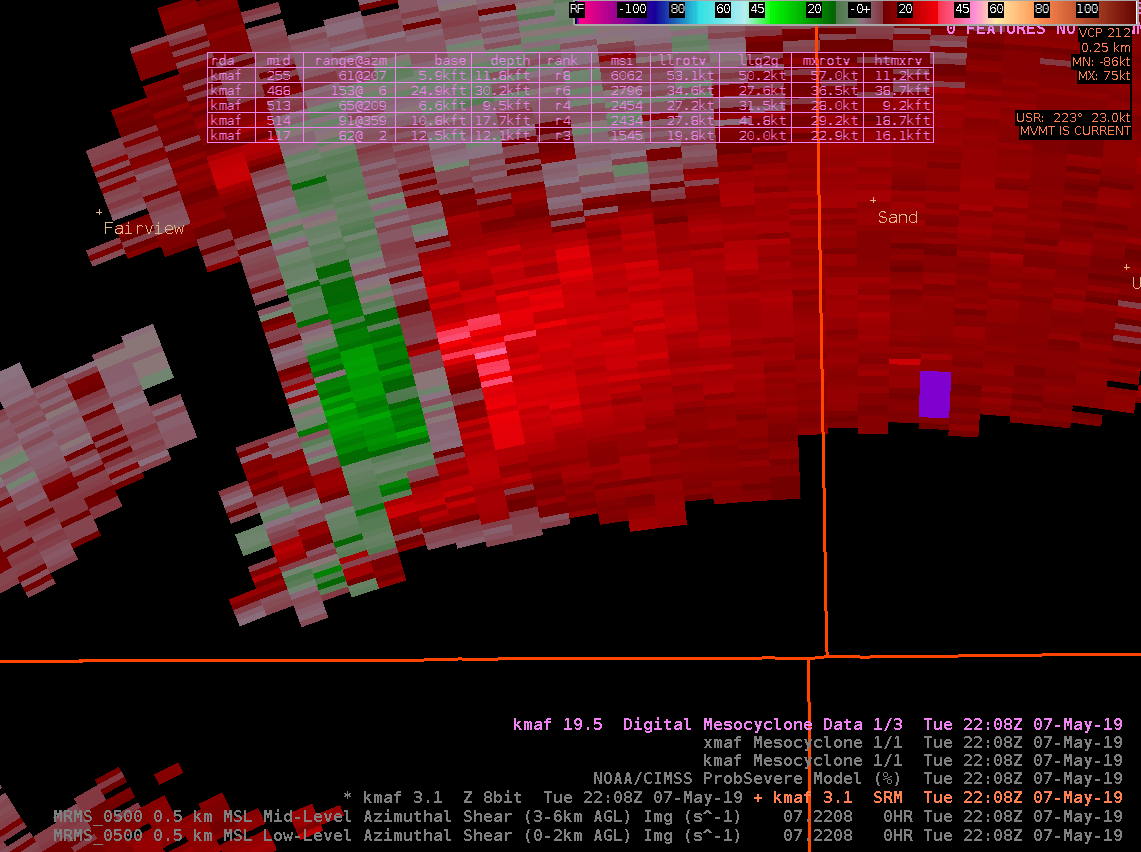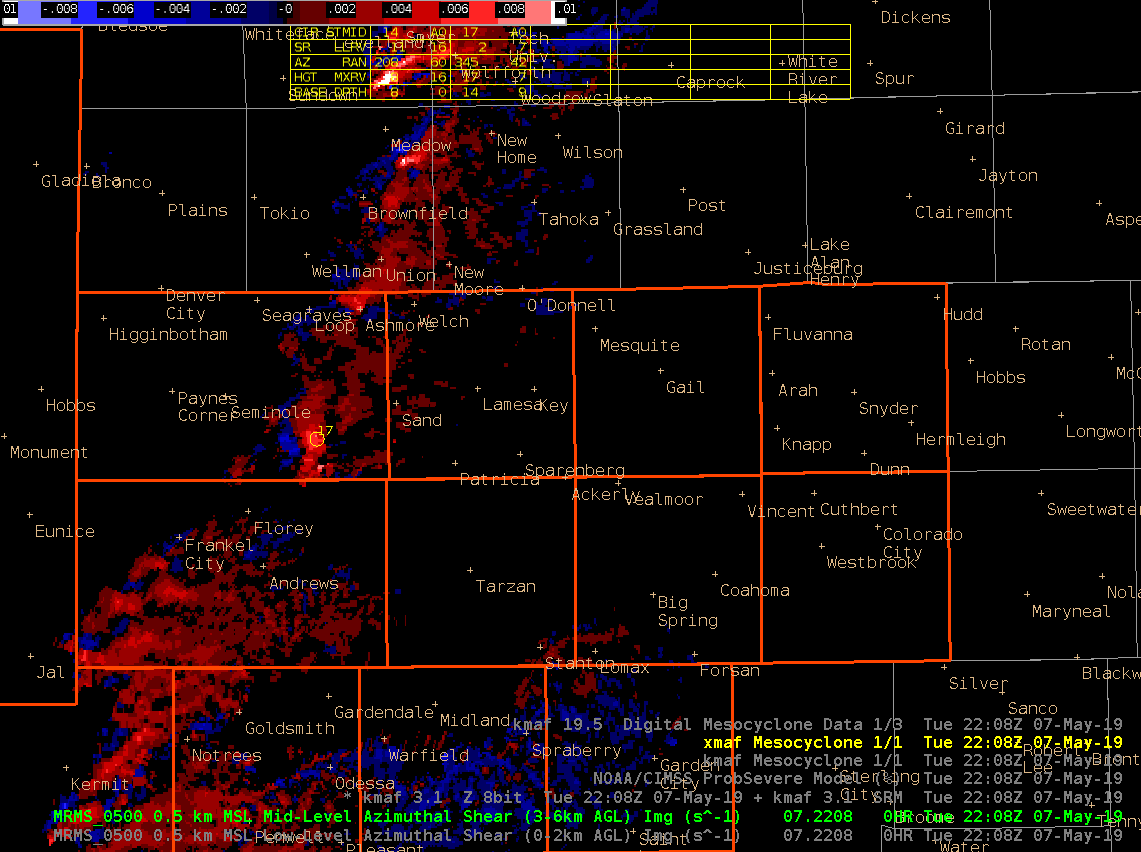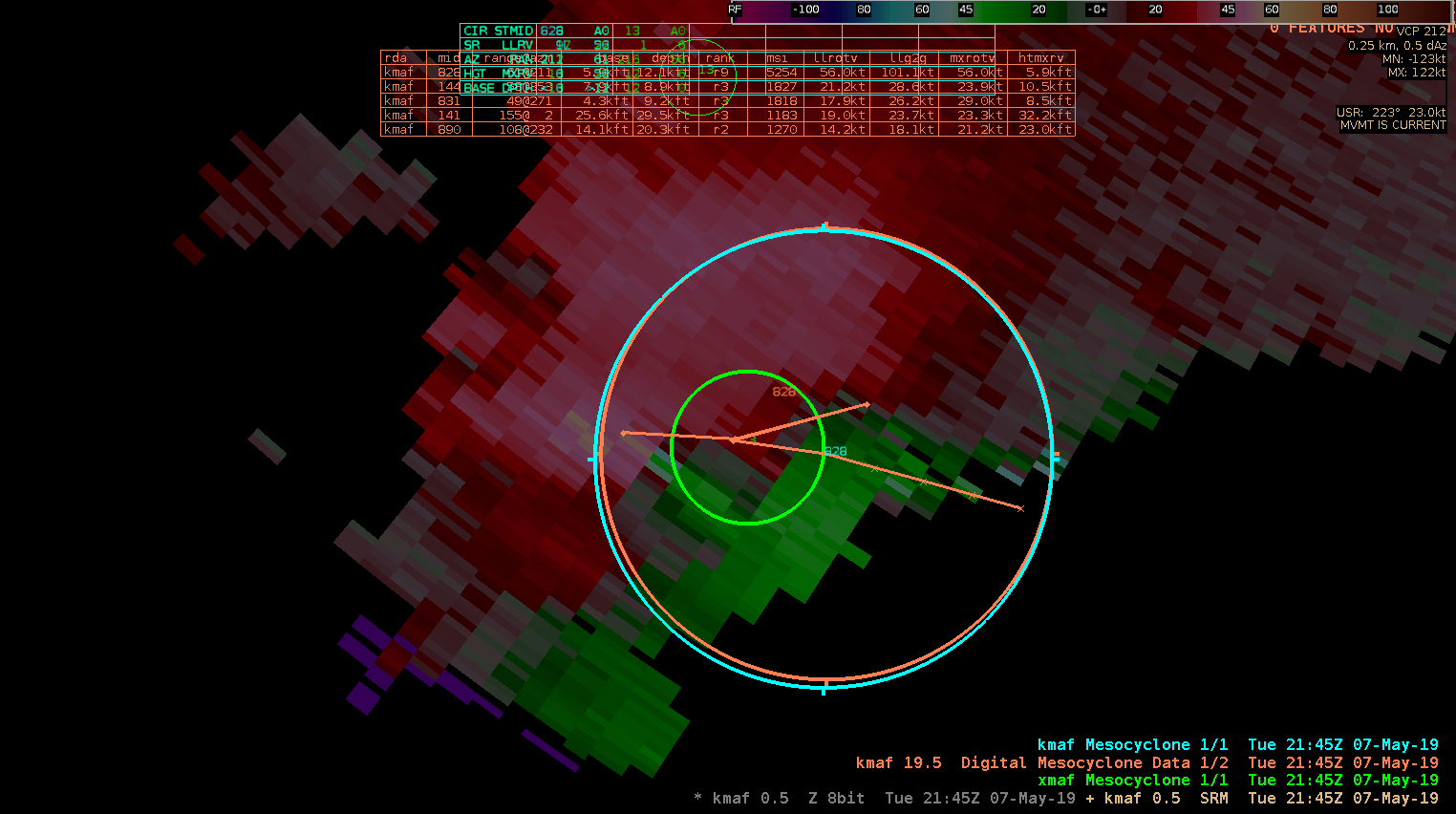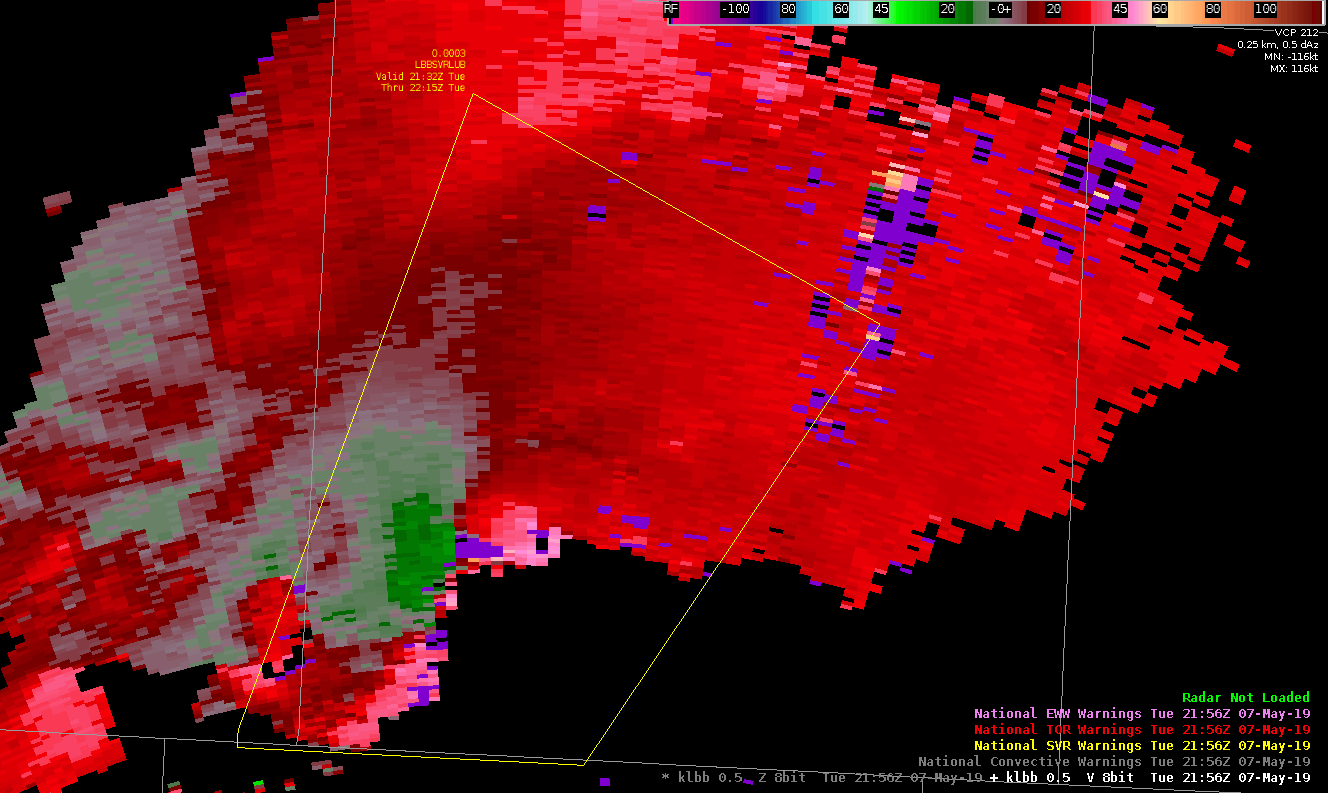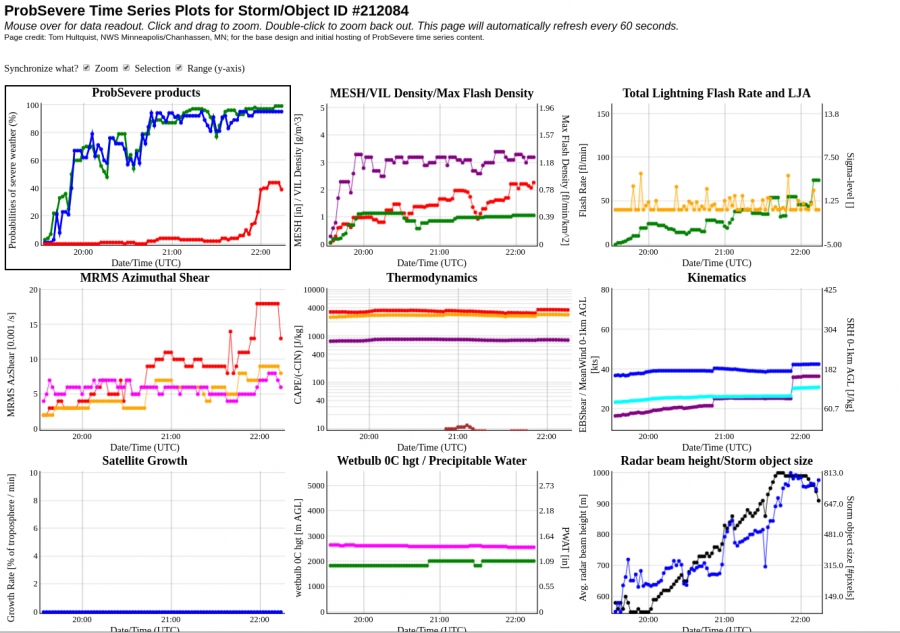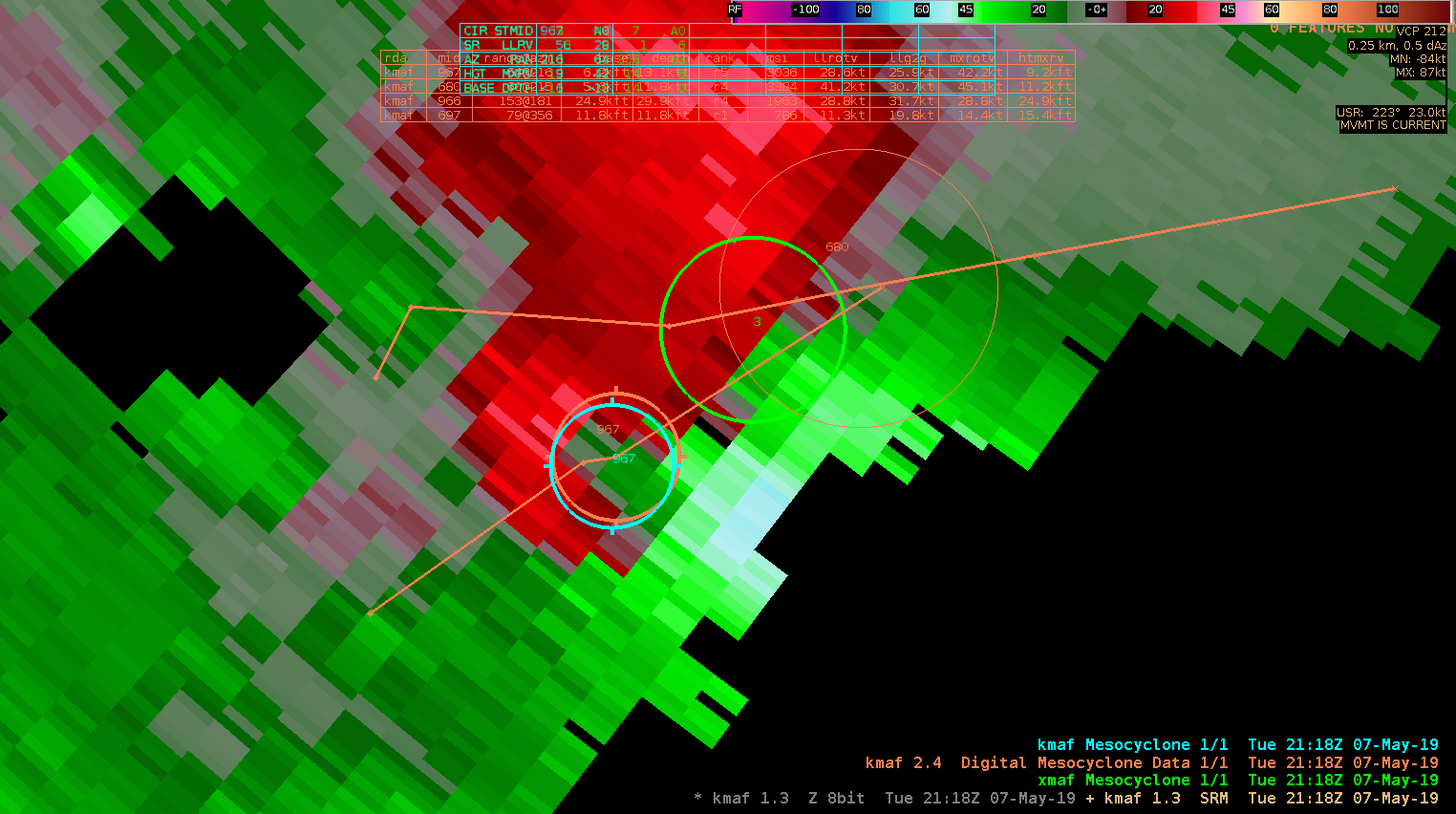Tested out the legacy (upper left), digital (upper right) and new (lower left) meso detection algorithms on a supercell off the Florida Coast. Tracking of the NMDA performed admirably on this cell from scan to scan. However, I was not seeing elevated icon statuses (thicker circle, or cross haired circle) as the meso strengthened and became strongest in the low-levels. Perhaps this was just an Awips display issue, but overall I would give an edge to the DMDA in term of overall usefulness because of this issue.
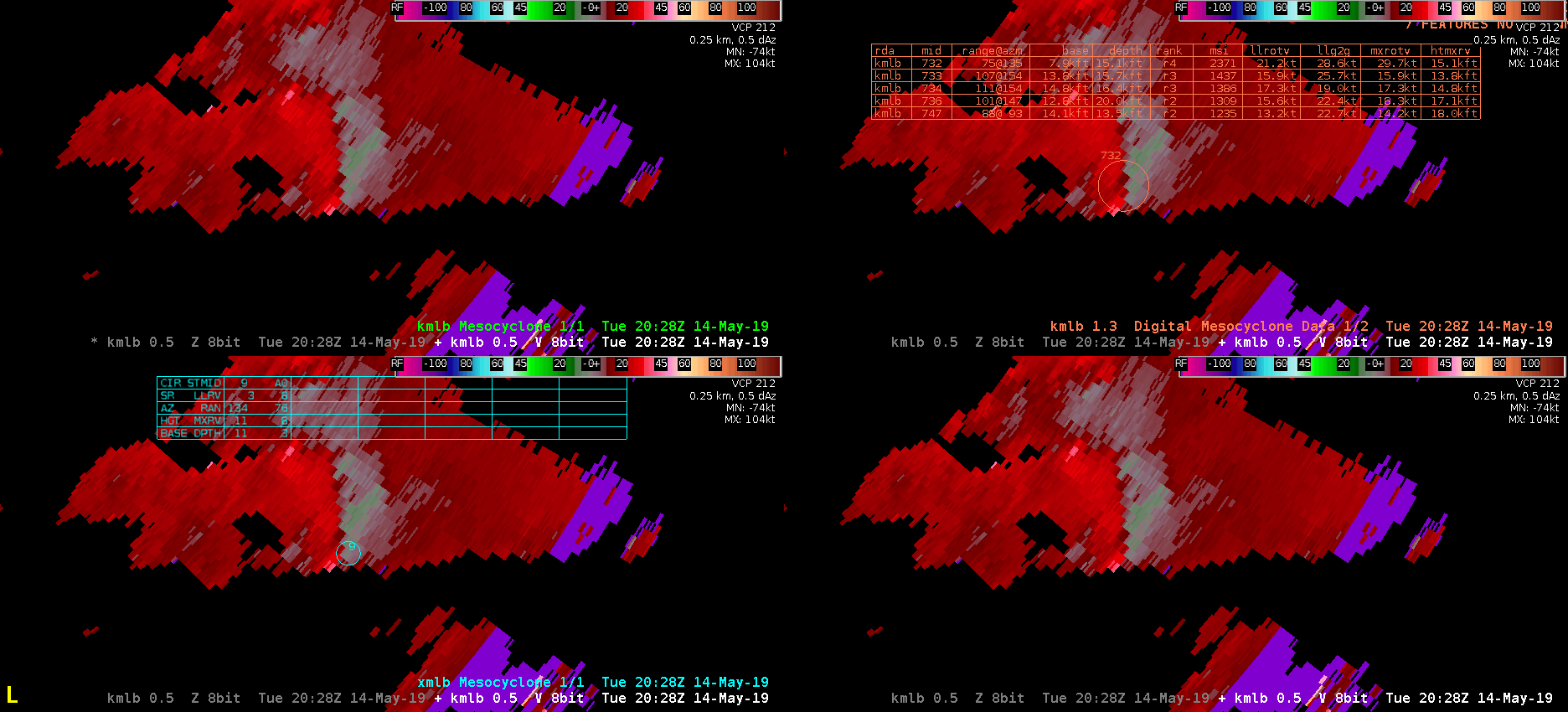
— warmbias —

